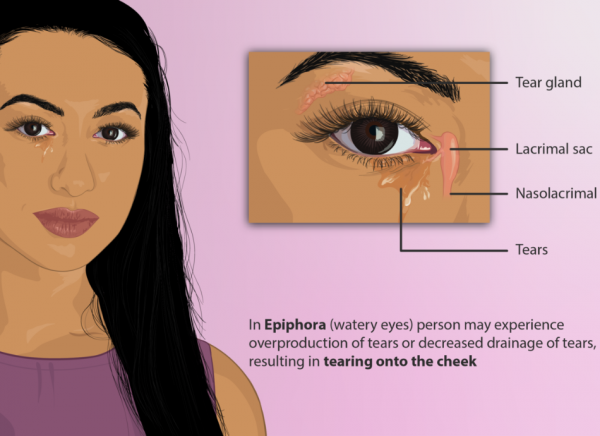Your tears are composed of 3 layers – oil, water and mucous. The oily layer is produced by the meibomian glands which line the edge of the eyelids. The lacrimal gland, which sits just below the eyebrow produces the watery layer. The third layer comes from microscopic goblet cells in the conjunctiva.
To keep your eyes comfortable, a small volume of tears is continually produced. When your eyes are irritated or when you cry, a greater volume of tears are produced from larger glands near the outer corner of the eye.
Some of the fluid in the tear evaporates from the surface of the eye. The rest drains from the upper and lower eyelids near the nose through bony canals (known as nasolacrimal ducts or tear ducts) and into the nose. This is the reason you need to blow your nose when you cry!
This image shows the parts of the eye associated with tear production and drainage.

Image credit: myupchar via Wikimedia Commons(external link)






